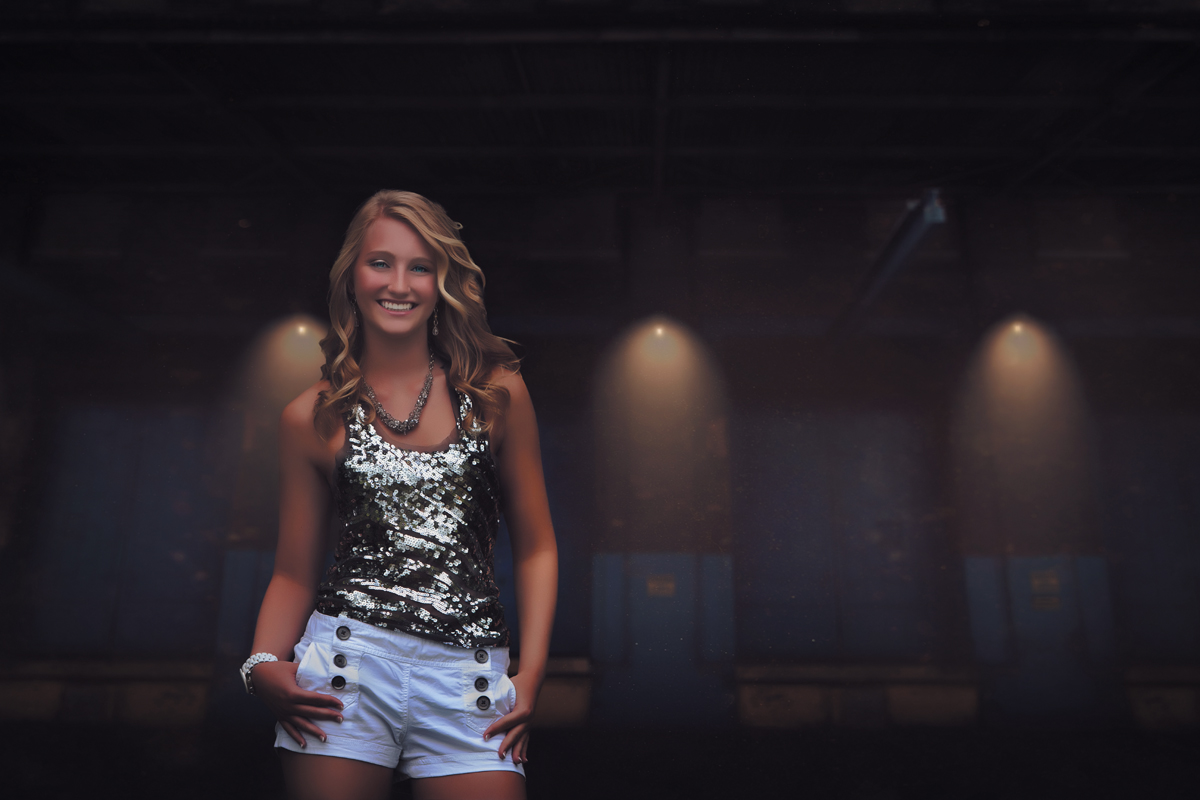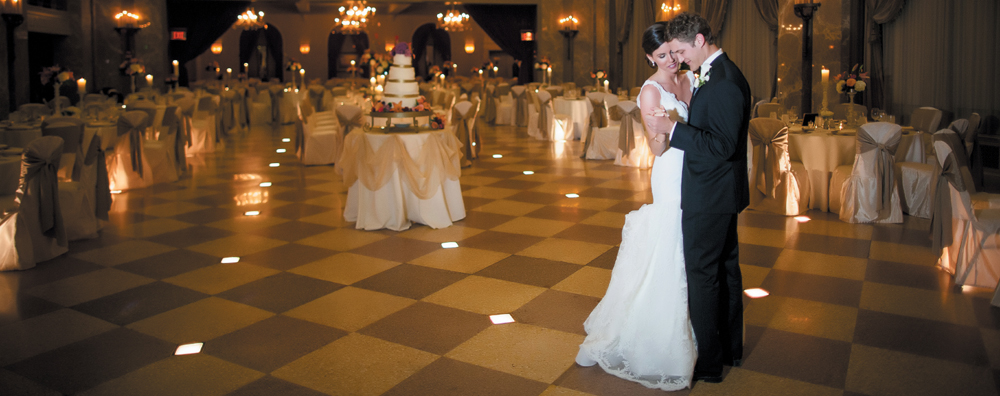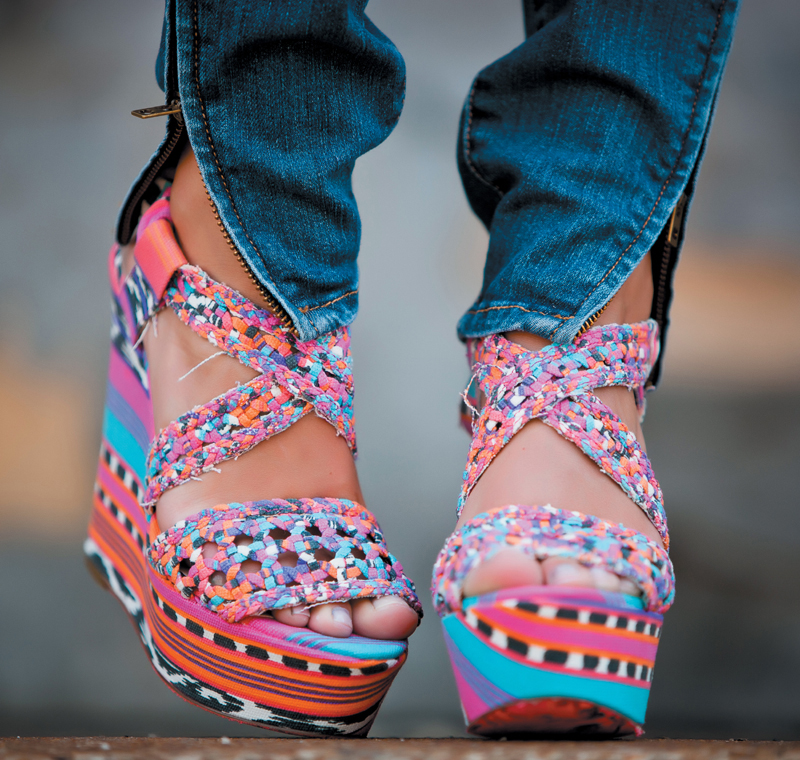Seven. Costs and Pricing

Okay, so now you’re out there. Your marketing, branding, and web presence are firing on all cylinders...and now the phone rings. Holy cow, what do you do? How much do you charge? Understanding your costs will help you determine your price. Too many people jump into business without a full grasp of the basic concepts. In this chapter we’ll drill into the business basics to get your costs under control and put a pricing structure in place to ensure you make a profit and earn a good living.
Costs
Costs. Sounds easy enough: This is how much I paid for something, right? No! That’s not how it works. I love when I’m talking to people who got into this industry as a hobby, and they insist they are making $50 per hour. “What do you mean, Sal? I shot a wedding over the weekend for 10 hours. They paid me $500 and all I had to do was burn a DVD for them. So, my cost was like $1, right?” Good grief!
Trust me. It cost a hell of a lot more than the price of the DVD. This is where the rubber meets the road, so to speak, and you have to start thinking like a business person—not like an artist. You have bills to pay, and you need to consider the cost of new equipment, insurance, retirement, and a host of other bills that add to your cost of doing business.
If you’re reading this and you’re one of those weekend warriors, I might seem a little harsh. But I am not harsh because I have ill will toward you as an enthusiast. I am harsh because I have no tolerance for bad business. You’re leaving money on the table. Money you can use to buy better equipment. Money you can use to send your kids to college. Money you can use for...fill in the blank here.
See, I am a huge believer in our industry and a huge believer in empowerment! I want to see everyone find their own success, but sometimes I see people get in their own way and hinder their ability to achieve success. And with that goal in mind, let’s start talking about costs.
Now, I don’t want to go all business school on you, so let’s focus on the things that will matter at a higher level and the things that will allow you to take immediate action within your business.
Cost of Goods Sold (COGS)
Often referred to as COGS, this number is important in your overall pricing strategy. Mistakes I have seen other photographers make are along the lines of pricing their work compared to what other photographers charge. Who cares what other photographers charge! Not a question. It’s a statement. It just doesn’t matter. You need to understand your costs and your clients before you can determine the price you’re going to charge.
The cost of goods sold is defined as something like this: “all costs of purchase, costs of conversion, and other costs incurred in bringing the inventories to their present location and condition. Costs of goods made by the business include material, labor, and allocated overhead.”
English, please.
Okay. The costs for your business or products have to include the cost of everything that went into producing it along with some estimated costs for overhead. For example, the cost of an 8x10 print is not $2, the price you’d pay from a professional lab. In order to correctly determine the cost of that 8x10, we have to think about the following:
• Rent for our studio space (or home-based business)
• Electricity
• Shipping
• Gas
• Drive time to and from shoot
• Storage space for the digital images and their archives
• Insurance
• Administrative overhead like phone calls, packaging, inspection of the prints, customer service
• Equipment like computers, cameras, lenses, memory cards, flashes
• Continuing education
And the list goes on and on. I guarantee you one thing: This costs a lot more than $2. In fact, if you’re charging less than about $25 for an 8x10, you’re probably losing money on the deal.
Here’s where I see a lot of photographers—and business people in general—go wrong. They completely underestimate the cost of their business operations.
Although I know some of these costs seem insignificant, they add up quickly. These are costs that can’t be ignored and have to be accounted for somewhere to ensure that you’re successful in both the short and the long term.
What a lot of other kinds of businesses will do is come up with a magic formula given to them by the bookkeeping department to account for some of those fixed and variable costs to apply to the actual costs of the products.
This allows a fair gauge of what it’s actually costing you. Of course, some of these numbers are a little magical. For example, let’s take gas: You might drive 5 miles to one client and 20 miles to another. I don’t expect you to sit there and calculate your actual costs every time you have a photo shoot. You’d be spending more time tracking your costs than you’d be actually shooting and making money.
The big thing here is to understand that these are actual costs that can’t be ignored. If I can get you to see that, we’re heading in the right direction.
That being said, my formula for costing goes against the grain a little. Let me explain. I don’t want to spend time trying to track my costs or time down to the minute, but I still need to be profitable. So I use a costing formula of 15 percent. Simply stated, if I can keep my cost of hard products at 15 percent, the rest will work itself out.
Now this is a rough number and you have to understand my sales process. We don’t sell a la carte. We are a package-based studio. (Later, we’ll talk more about why I don’t believe in a la carte pricing or build-your-own packages.) The 15 percent figure does not hold true for individual prints. So, an 8x10 will cost you about $2. With the 15 percent number, you would charge $14 for an 8x10. You would also go bankrupt.
I am also not a fan of the pricing calculators that encourage you to add a markup of 300 percent (or any other variable). They don’t work quite right either. Let’s follow our 8x10 model: $2 cost x 300 percent markup. Now you’re charging $6 for an 8x10. Oh boy. I can see you earning that starvingartist badge quickly.
In all seriousness, though, there’s no foolproof method for pricing. There are two lessons to be learned here. One, there’s no silver bullet. You have to massage this process to fit your business and each individual product you offer. Two, a la carte pricing makes it difficult to achieve any sort of consistency. Instead, I believe in a bundled-pricing strategy. This gives you more control over your overall costs and profits. And frankly, your clients are already used to bundles. Everywhere they go, things are bundled for discounts. From the grocery store to Sam’s Club, bundles are the way to go.
Pricing
No matter where I go or who I talk to, how to price your goods or services seems to be the biggest challenge for any photography studio. But pricing strategy doesn’t have to be complicated; it just needs to follow some basic business principles. And now that you have a good idea of the cost of your products and services, you should be able to price for success.
First, let’s explore a few questions out there. Should you offer a la carte pricing—basically allowing clients to build their own packages—should you offer a print credit system, or should you offer a bundled system? These are all reasonable questions you may have. The biggest problem of all: there are educators all over the country teaching different philosophies. Ultimately, you’ll have to come to your own conclusion based on the type of business you’re running and what you think will work best for you.
The Session Fee
For me, the session fee should be for just that: the cost of the actual session. The client is paying for your time and talent as an artist. Don’t throw everything and the kitchen sink in there. You’re devaluing your offering if you do that. If people want to work with a professional photographer, there’s a cost associated with that. Granted, a session fee is going to be associated with more of the portrait-style photographer. However, the point is still relevant. You have to figure out how to charge for your time.
The amount you charge is dependent on many factors, including your niche, your experience, and the current competitive landscape. No matter the kind of photography business you’re pursuing, you need to calculate this fee.
Our studio charges about $300 for most portrait sessions. This includes a certain amount of time for the actual shoot. No prints or digital files are included in this fee. All those items are listed earlier and beyond the cost of my time. When we were starting off, we charged about $100 for a session. I think that’s a great place to start. Having a fee for your time will ensure you get closer to working with the right clients—those who appreciate the value of your service.
In the spirit of talking about the value of a session fee, the next logical question should be “Would you ever waive your session fee?” Absolutely. As with everything else in the world and your business, you need to look at this stuff on a case-by-case basis. When it makes sense, I will waive my fee knowing that there’s a bigger sale and opportunity on the back end of the shoot.
Look within your industry to get a sense of how much photographers are charging for their services, but remember: This is just to get a sense of the market and should be used for reference only.
Various Pricing Models
As I previously mentioned, I am a package/bundle guy. You’ll see that I err on the side of bundled discounts in all my offerings, and I think our clients are used to this. It’s basic consumer behavior—people want a deal. Let’s explore each option.
A La Carte
This allows your client to buy whatever they want and build their own custom packages. Sounds like a great idea at first. I mean, what’s not to like? I can see the promotion behind it now. “We allow all our clients to build their own custom packages.” However, after some implementation you might soon realize you’re limiting your sales. Why, you might ask?
When a client is selecting and building their own packages, they are making pricing decisions—the worst kind of decisions for our type of work. They are adding things up in their head and seeing how much things are starting to cost. This will influence their behavior in the wrong way. Rather than selecting what they want, they end up selecting what they can afford. And the more they add to their shopping cart, the more those dollars add up. In my opinion, this sales model is not conducive to consistently big sales, and I base it solely on my own behavior as a consumer.
Credits
A credit-based system can work a number of ways, but the most common might be along these lines: purchase this package or session fee for $X and get a $500 print credit for our studio.
This is the worst model of them all, no matter how you cut it. When you sell a client “credits,” their mind-set is in the wrong place. I know this, because we tried it.
No matter how they acquired the credits, the end result is the same. The client believes they don’t need to spend any more money because, after all, they have all these amazing credits.
Again, it comes back to consumer behavior. Ask yourself this: When you have a $100 gift card to your favorite store, do you go in planning to spend $500? I know I don’t. Which is not to say I won’t spend more, but it’s an uphill battle to get me there. I don’t want to arm wrestle with my clients to get them to spend more.
When we implemented this model, client after client would walk in thinking they didn’t have to or, worse yet, didn’t want to spend more money. Then we had to become heavy-handed with the sales tactics to get them to spend more, and that is not who I want to be. I want to be able to look myself in the mirror every day and feel good about what I am offering clients. I don’t want to feel like I’m an infomercial host.
Packages
If you haven’t already been able to figure it out, bundling is my favorite option. Why? At its core, everyone loves a deal! Bundling is everywhere we look. Everywhere! From fast food to home purchases, there’s a bundling of products or services that will, compared to buying things a la carte, save you money as a consumer.
From a seller’s perspective, bundling helps you get larger sales averages because you are, to a certain extent, directing clients to larger bundles that offer them great savings and, hopefully, more profitability for you and your business.
So, let’s come back to consumer behavior. Whereas a la carte pricing gets a client thinking about how much something will cost them because they see the number growing with every item that they add to their list, prepackaged bundles evoke a model of cost savings. Clients see that by buying into a bundle they are in fact saving 30, 40, 50 percent, or more. The psychology here is brilliant. Marketers all over the world employ this model with great success. Who am I to argue with them?
This model drives sales based on an approach of savings rather than spending. It’s as simple as that, and it works. It works on me, works on you, works on consumers everywhere, because it makes sense.
The Psychology of Pricing
Here’s what you should not do when trying to determine your pricing: look to your competitors. This is one of the biggest mistakes I see photographers around the world make. We offer a unique, one-of-a-kind service; I don’t care what Bob down the street offers or charges.
You have to value your brand. You have to value the service you provide. Playing copycat isn’t going to help you find success. You have to find your own niche. And pricing is a big part of sending a message to clients on where you stand as a business.
Are you competing on price or are you competing on some other factor, such as service and quality products? There are certain industries in which competing on price is the way to go. The low-cost provider wins. This works well for products that are commodity products/services. Commodity products/services are those products/services that have no discernible difference between them. Toilet paper is one of those products. Is your artwork the toilet paper of your local market? I sure hope not. I see my artwork as being extremely unique. And as a unique product offering, I can charge a premium for that. I will not compete on price.
Here’s something I can guarantee you. If you compete on price you’ll ultimately fail! You’re a limited resource. You can only work so many events per day, edit so many pictures, take so many phone calls. Look to the corporate world for proof of this. Show me anywhere in the corporate world—any product, any service—where a limited resource is being sold for a discounted amount. Or where a company like that competes on price. It doesn’t exist! You know why? Because it’s a ridiculous way to run a business. So, stop it now!
You’re more than a weekend warrior. You’re more than just a DVD of images. You’re more than just a guy/gal with a camera. You’re an artist! People will pay you for your vision of the world. This is a gift. Value that gift and you’ll have the confidence to charge what you’re worth. Like anything in life, your product or service is worth whatever someone is willing to pay for it. I think there are a lot of people in the world who see the value of great photography and are willing to pay that premium.
Are you wondering how you get to the point where you’re priced correctly? Well, there’s no simple answer to this. It happens over time. You have to experiment with pricing. Raise it and see what happens. You might be pleasantly surprised. We kept raising our prices every three months until we found a place where we were happy with our income level and our clients were still willing to pay for our services.
The Value of the Brand
Now, let’s take a quick look at these two options and how they create perceived value for your brand.
If you’re the low-cost provider, you’re in essence providing a commodity product. Through price alone, you’re signaling that your product or service is not valuable. That’s the wrong message to send any prospective client. You’re devaluing your own business, and you don’t even realize it.
I run into photographers every day who tell me that their clients don’t value them, their clients don’t want artwork in their homes, their clients don’t this or that. That’s because the photographer is attracting the wrong kind of clients. These are clients making price decisions. They don’t care about your artwork; all they care about is getting the best possible price. Once that happens to your business, you’re screwed. It will be an uphill battle the rest of your career. Bad clients refer more bad clients.
The common misperception here is that if you raise your prices you won’t book any business. That is 100 percent false. The complete opposite will happen to you. If you raise your prices, you’ll stop booking bad clients. Not only will you continue to book business, you’ll begin to book the right clients as well.
Pricing is an amazing thing. Charge more and consumers automatically make certain assumptions about your brand. It has to be better if it costs more, right? Now, I’m not suggesting that you go off and just raise your prices without offering a better product or service for your clients. This approach will undoubtedly lead you down the wrong path. It’s a simple exercise to understand consumer perceptions and how they impact buying behavior.

If your ultimate goal is to build a luxury brand, one that clients lust for, you have to charge the right price for that. And that’s never going to be inexpensive. In our local market, we’re one of the most expensive studios in the area and our business has exploded ever since we started raising prices.
We started to attract better clients. Not only ones who could afford us, but ones who couldn’t afford us either. “Whoa, wait, Sal, you’re telling me you’re booking clients who can’t afford you?” That’s right! Think about it. We all know people who can barely make ends meet but have a 60-inch flat screen TV. Where did that money come from? It’s simple. Everyone has money for what they want to have money for. It’s about priorities.
My client is a client who sees the value in great artwork for their home. That client is willing to make sacrifices to get that great artwork. Why? Because they see the value in what we’re offering—and because of our price point, they understand we’re a limited resource and not everyone can afford us. That immediately leads to huge perceived value of our brand. I don’t have to force people to spend money with us; they want to spend money with us to get access to this amazing limited resource: my time and artistic talent!
Establishing Value
This is no easy task. How you establish value for your clients can make the difference between being seen as an expert in your area or being seen as just another shoot-and-burner. What are you offering beyond the click? That’s the question that has to be answered.
Everyone is a photographer today. We all know a friend or family member who has a camera and can do the family pictures or wedding pictures for next to free. How can you compete with that? For most photographers, they try to compete on price. Well, after reading the previous section, hopefully I have drilled into your head that’s the worst possible way to compete.
Instead, we compete on value. We want to offer our clients as much value for the dollar as possible. We do this by offering high-end products and services. Something not found with that friend or family member—and definitely something not offered by the $500 photographer.
Service
I can’t stress this point enough: Without service you have nothing. This has to be the cornerstone of your business model. Take care of your customers, and they will talk about you for years to come! Everything you do has to focus around the customer and the best possible service you can offer.
Susie Photographer can’t offer service because she charges $500 for pictures and hands over the DVD. She can’t afford to offer service. That cousin who has a camera and did the family pictures can’t afford to offer good service either. After all, they are a family member, not a business owner. They don’t care about service. They did this for free.
So where does service begin and end? Great service starts when that initial email comes in, and it ends when the final product is placed in the client’s hands. Arguably, service should continue for years to come, but I’ll save that conversation for another day.
How long does it take you to respond to client emails or phone calls when they come in? Too long, as far as I am concerned. We respond to 90 percent of client emails in less than 12 hours. Sure, there’s occasions when you need to do a little research before getting back to the client. So, what’s wrong with letting them know you got their email and will get back to them as soon as you can research their request? The worst thing you can do is nothing. Lack of communication is the worst possible thing you can do for your customers. It will always lead to frustration and misunderstanding.
How long are you making clients wait to see their images? If you’re not showcasing their images in two weeks or less, you’re once again providing bad service. People don’t want to wait two months or more to see their images. They are excited. They hired you for great images and you’re having them wait 6, 8, 12 weeks to see them? The excitement has worn off. More than likely, they won’t spend money either. And what about that referral? Good luck with that.
You have to provide exceptional service in both a tangible and intangible way. The one thing to understand: This is a journey, not a destination. Every year we’re looking for new and better ways to improve the customer experience. For example, whenever one of our clients books our top wedding package we send them a bottle of our favorite wine and a handwritten thank-you note. That’s a level of service that our competitors can’t even begin to offer, and it blows our clients away every time. After every wedding, we send our clients another handwritten note thanking them for letting us be a part of their big day.
Service doesn’t have to cost money. It just requires thought and effort.
Products
I hope your takeaway from all this isn’t this: “Hey, Sal said raise prices and I will book more business.” No, that’s not what I am saying at all. Take my statement in context. You have to take care of all the other housekeeping items as well.
One of those items is unequivocally going to be your product offering. We don’t offer to shoot and burn in our studio. I find it to be an incomplete service to our clients. I want to deliver high-end products to our clients that they will enjoy for years and generations to come.
When you’re charging next to nothing for your services, you don’t have the ability to offer your clients high-end products. This is case number one for raising your prices.
What type of products do we offer our clients? The number one item we offer to our clients are unique albums—not only in their design, but in their quality and leather options. Regardless of the type of client—wedding, family, baby, senior—they all lust after these high-quality products. It allows us to charge a premium for our services. Think about it. What client doesn’t want an heirloom-quality product for their family to enjoy for generations to come? All of our clients love knowing they have an option beyond the DVD to display all their amazing images.
Just so we are in sync, know that this concept holds true no matter what industry or niche you’re focused on. If it’s not albums, then what is it? What products can you offer your clients that get them excited to work with you and allow you to stand out from the crowd? For our studio, we are on a never-ending search for those products. We go to trade shows every year looking for that new product we can add to our offerings to stand out in an ever increasingly competitive market.
Offering your clients a DVD is almost a joke to me. What are they going to do with it? Most have no clue. They just feel like they need it. Instead, show them what to do with it. Show them what you think is the best way to display their images. After all, you’re the expert, right? Taking this extra step helps establish your value even more.
Packaging
How are you delivering the products to your clients? Our studio packages everything we have in a very professional way. We don’t deliver them in a loose box. I want my clients to feel as if they just got the best gift in the world.
The way you package your products says a lot about what’s inside the box. Do you value your products? Then show the client this. Show them from the minute you deliver it to them.
Nothing goes out of our studio that is unbranded! Everything. Every package. Every DVD. Every bag. It all has our logo and coloring on display. It’s the final piece in your overall customer experience with your studio. Make it count.
A common quote from our clients is something along the lines of, “Oh my gosh, I don’t even want to open it. It’s just like a gift.” Yes. Yes, it is. And that’s exactly the response I am hoping to evoke from my clients. In return, they are extremely protective of their albums and prints because I am signaling to them that this is precious cargo.
And I don’t want you to think it has to be expensive. First, make sure your branding is in order. Then, look for suppliers that can provide you with kraft paper that matches your look and feel. Pick up some ribbon that matches. Get some bags made. All these things are super inexpensive. Maybe it costs us $10 per order on packaging. If you’re charging correctly for your work, this should be a nonissue and it will blow your clients away.
Creativity
Your creativity has to be part of your X-factor. This is where you have the ability to shine above the rest. Show that you’re an expert. Show that your work is different from that of your competition.
For us, this is one of the easiest ways I’ve found to separate ourselves from the competition. We try every week to do something new, something different. I want to get people talking about our work. I want to provoke thought and conversation. That’s my goal as an artist.
You might be wondering how to do this. For me, I read, read, and read more. I love to flip through magazines and read about new lighting techniques and trends. It gives me inspiration. I then use that inspiration to try new things with my clients. And in return, clients are constantly blown away by our level of creativity.
The same holds true with our product lines. We’re always looking for new and innovative products to offer our clients. They see that as another level of creativity. We show them new ways to display and enjoy their images.
You have to find a way to push the limits for yourself as an artist. If not, you’ll get stale, and your work will look like every other photographer out there. Find someone who inspires you and study their work. Study the lighting and the posing. Study the composition. And then find ways to incorporate those inspirations into your next photo shoot.
Experience
When all the dust settles, it’s all about the experience the client has with you, and as you know, this is all tied to everything you have done with them from that first email until the final product is delivered.
That being said, what can you do to create a better customer experience? You must challenge yourself and your studio to raise the bar. It’s this experience that will establish value for your brand in your local market—in any market.
Our clients tell us all the time, “You were worth every penny.” That’s an amazing feeling for us. That’s how we want our clients to feel. If they feel that way, they’ll spread the word and become our best marketing brochure. You can’t buy that kind of publicity.
I firmly believe that we offer a high-quality product and service. However, I think the number one key to our success is giving our clients an experience of a lifetime. It’s that experience that creates huge perceived value and allows us to be more than just “another photographer.”
Next Steps
What will you do tomorrow to change the client experience and offer a service that is second to none? I want you to think of two things right now that you can do starting tomorrow. Write them down right here, and then go execute them immediately! Here are two things I think any studio probably has room for improvement on: 1) returning emails or phone calls quicker, and 2) getting clients their images faster. Make those two changes and I promise you, your business will immediately stand out from the crowd as a top-notch photography studio.
In addition, get your pricing sheet out. Make sure everything you offer is listed there. Now, I want you to write next to every single item you sell the hard cost of that good, including shipping, tax, and similar factors. What does it cost you at the absolute minimum to get that product to your studio? You should always have this information handy for reference. I know, within a few clicks on my computer, how much a product or package is costing me to fulfill for my clients.
And finally, sit down and start mapping out what you want the client experience to look and feel like within your studio. A great exercise is to pick a brand you truly admire and go through their experience. For us, we use Louis Vuitton as a model for our business. We went into the store, made a purchase, and enjoyed the client experience. From there, we took away many valuable lessons and ideas that we have quickly incorporated into our business. One example we incorporated: They offer their customers champagne or cappuccino when they are in the store.





